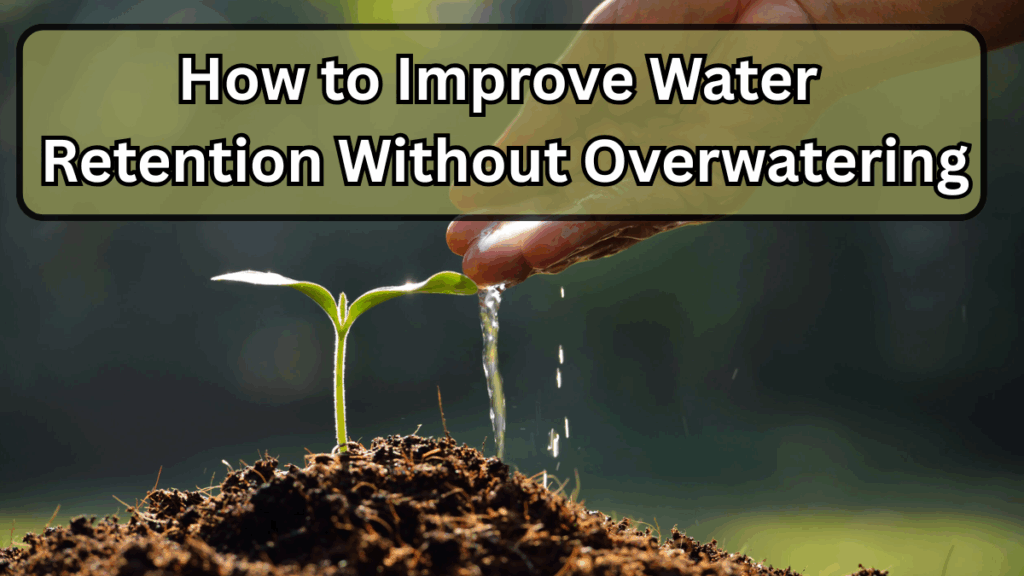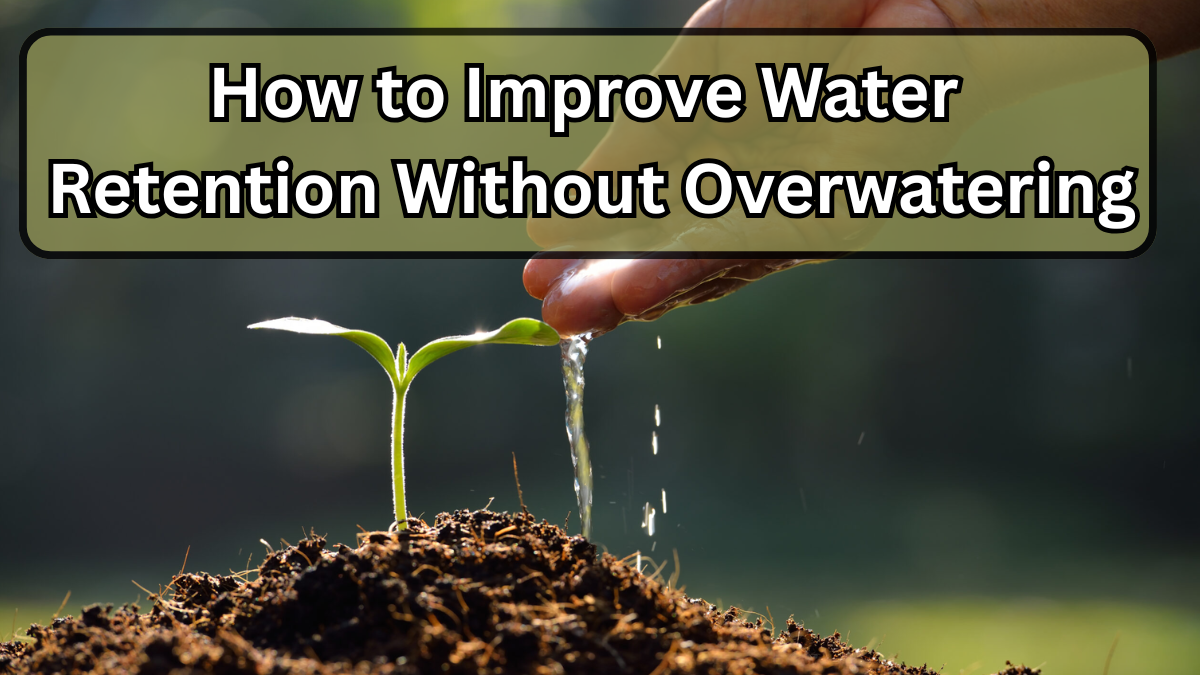Watering your plants is essential, but overwatering can do more harm than good. Striking the right balance is key to keeping your garden thriving. One of the most effective ways to do this is to improve water retention in your soil. This allows plants to access the moisture they need without constantly saturating the soil.
Here’s how you can boost water retention effectively.

Enhance Soil with Organic Matter
Adding soil organic matter such as compost or aged manure helps your soil hold moisture naturally. Organic matter improves soil structure and allows it to retain water while still providing oxygen to the roots.
Tips for using organic matter:
-
Mix compost into the top 6-8 inches of soil.
-
Use leaf mold or well-rotted manure for extra moisture retention.
-
Avoid overloading soil with fresh organic matter, which may temporarily reduce water-holding capacity.
Use Mulch to Reduce Evaporation
Mulching is a simple and highly effective way to improve water retention. A layer of mulch prevents water from evaporating quickly and keeps soil temperatures stable.
Mulching ideas:
-
Wood chips, straw, or shredded bark work best.
-
Apply 2-3 inches around plants, leaving a small gap around stems.
-
Replenish mulch as it decomposes to maintain effectiveness.
Introduce Perlite or Wetting Agents
Perlite is a lightweight soil additive that improves water distribution while preventing compaction. Similarly, wetting agents help soil absorb water evenly rather than letting it run off the surface.
| Method | Benefits | How to Use |
|---|---|---|
| Perlite | Improves aeration, prevents compaction | Mix 10-20% perlite into potting soil |
| Wetting agent | Helps water penetrate dry soil | Dilute as per instructions and apply while watering |
Improve Soil Structure with Compost
Compost not only adds nutrients but also enhances soil’s water-holding capacity. Rich, crumbly compost allows soil to retain water and reduces the need for frequent watering.
Application tips:
-
Layer 2-4 inches of compost on garden beds.
-
Work it into the soil lightly without disturbing plant roots.
-
Compost also promotes healthy microbial activity, which improves overall soil health.
Avoid Common Mistakes
Even with these methods, mistakes can reduce water retention:
-
Over-tilling soil can destroy its structure.
-
Using sandy soil without amendments drains water quickly.
-
Applying too much fertilizer can draw water out of the soil.
FAQ Section
1. How can I tell if my soil needs better water retention?
Look for signs like soil drying out quickly, water running off the surface, or plants wilting despite regular watering.
2. Can I use mulch in potted plants?
Yes! Apply a thin layer of mulch on the soil surface in pots to reduce evaporation and help retain moisture.
3. Are wetting agents safe for all plants?
Most wetting agents are safe, but always follow label instructions and avoid overuse, especially on sensitive seedlings.
4. How often should I add compost or organic matter?
For best results, add compost once or twice a year and replenish mulch as needed. Consistent soil improvement enhances water retention over time.
Final Thoughts
Improving water retention doesn’t mean you need to water more. By focusing on soil organic matter, compost, mulch, wetting agents, and perlite, you can create a soil environment that naturally holds moisture, supports healthy roots, and reduces the stress of frequent watering. With a little care, your plants will thrive even in drier conditions.
Click here to learn more
